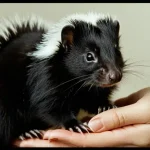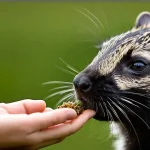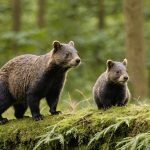Recent Landmark UK Wildlife Reintroduction Projects
Discovering key efforts revitalizing native species
Recent UK wildlife reintroduction initiatives have focused on repopulating iconic species and restoring ecosystems. Among these, several noteworthy projects stand out for their scale and impact. The successful reintroduction of the white-tailed eagle in Scotland serves as a prime example, aiming to boost biodiversity and revive lost predator-prey balances. Similarly, efforts to reintroduce beavers in England and Wales address both habitat restoration and flood management, showcasing how recent projects blend ecological with practical conservation goals.
This might interest you : What are the most threatened animal species in the UK today?
These conservation efforts often involve the collaboration of government agencies, non-profits, and local communities, emphasizing a shared commitment. Lead organizations such as wildlife trusts and environmental agencies shape project planning and monitor progress carefully to meet goals. Reintroduction plans typically include habitat preparation, ongoing population monitoring, and public engagement to ensure sustainability.
The objectives underline restoring ecological function, increasing species numbers, and enhancing public awareness, creating a model for future UK wildlife reintroduction efforts. These recent projects highlight how targeted conservation efforts translate scientific knowledge into tangible natural recovery.
Additional reading : What Are the Most Unusual Animal Discoveries in the UK?
Notable Species Reintroduced in the Last Five Years
Recent species reintroduction UK efforts demonstrate a dedicated movement within wildlife conservation UK. These programs target mammals, birds, and insects that once flourished but declined due to habitat loss, hunting, or environmental change. Notably, the successful return of the beaver stands out as a keystone species. Beavers play an important ecological role by engineering wetlands that enhance biodiversity and water quality.
Bird species such as the sea eagle have also been part of these initiatives, helping to restore predator-prey dynamics and supporting ecosystem balance. Meanwhile, emphasis on insect reintroduction involves pollinators like the large blue butterfly, crucial for plant reproduction and maintaining healthy habitats. These reintroduction projects highlight careful planning and monitoring, essential for ensuring sustainability and integration of species into their native environments.
In sum, the focus on diverse taxa through wildlife conservation UK underlines the country’s strategy to restore natural heritage while promoting ecological stability. Readers eager to explore more about these efforts can access detailed guidance on how species recovery is managed in practice.
Key Goals and Expected Ecological Benefits
Exploring the impact of ecological restoration through targeted actions
The primary goal of ecological restoration efforts is to enhance biodiversity by reintroducing native species and rehabilitating degraded habitats. This targeted biodiversity focus aims to reverse species decline and restore natural balance, leading to improved conservation outcomes. For example, carefully planned species reintroduction can catalyze the recovery of food webs, promoting resilience within ecosystems.
Anticipated ecosystem impacts include increased species richness and stability, with ripple effects that improve soil quality, water cycles, and natural pest control. Such results not only boost species recovery potentials but also reinforce ecological functions vital to long-term habitat health.
Beyond environmental gains, these restoration projects generate broader benefits for local communities and their natural heritage. Healthy ecosystems support livelihoods through improved ecosystem services such as clean water and pollination, linking conservation directly to community well-being. These intertwined goals reflect the importance of holistic approaches to ecological restoration, ensuring lasting positive outcomes for both nature and people.
Leading Organizations and Partnerships Driving Projects
In the UK, conservation organizations play a pivotal role in safeguarding wildlife and habitats through effective collaboration. Key players include NGOs, government bodies, and research institutions forming strategic wildlife partnerships. These partnerships harness collective expertise and resources to tackle complex conservation challenges.
Funding is sourced from government grants, charitable donations, and private sector support, enabling these organizations to implement large-scale projects. For example, joint ventures between NGOs and governmental agencies ensure that policies align with scientific research, resulting in sustainable conservation outcomes.
Collaboration modes vary, ranging from formal consortia to flexible working groups targeting specific issues, such as habitat restoration or species protection. These partnerships capitalize on shared data, coordinated fieldwork, and public engagement campaigns to maximize impact.
By integrating diverse stakeholders, conservation organizations UK enhance efficiency, avoid duplication, and foster innovation. This collective approach is essential for addressing the multifaceted nature of wildlife conservation and achieving long-term ecological resilience across the country.
Project Timelines and Progress Updates
Wildlife project timelines across the UK reveal a blend of ambition and patience essential for successful conservation efforts. Several wildlife reintroduction projects have marked significant milestones recently, with launch dates set over the past few years to restore native species to their natural habitats. These projects primarily focus on reestablishing populations of critical species whose decline has impacted biodiversity.
Progress updates indicate that early outcomes are promising in some areas but challenging in others. For example, initial releases have demonstrated encouraging survival rates, affirming careful planning in species selection and site preparation. However, challenges such as adapting to local environmental conditions and mitigating human-wildlife conflict remain.
The latest UK conservation news emphasizes the importance of ongoing monitoring. Timely data collection allows project managers to adjust strategies, enhancing the likelihood of long-term success. For stakeholders and enthusiasts tracking wildlife project timelines, transparency about both achievements and obstacles is key to understanding the evolving conservation landscape.
By closely following these developments, the public gains insight into how each phase—launch, monitoring, and adjustment—contributes to restoring the UK’s natural heritage.
Where to Find Further Information and Authoritative Resources
For those seeking detailed insights on UK wildlife, several UK wildlife databases stand out as reliable sources. These databases compile extensive records of species sightings, habitat changes, and conservation status, offering ongoing updates essential for researchers and enthusiasts alike.
Official reports issued by government agencies and recognized environmental bodies provide rigorous, evidence-based analysis. These official reports often include comprehensive data on species population trends and habitat preservation efforts. Consulting these enables you to access the most current and verified information.
In the realm of conservation research, respected organizations such as the Wildlife Trusts and Natural England frequently publish findings and news related to biodiversity. Their work supports practical conservation measures and raises public awareness.
To stay informed, regularly reviewing these sources helps track the progress of UK wildlife conservation projects and understand evolving environmental challenges. Leveraging these authoritative resources empowers users to base decisions on factual, up-to-date information and contributes to more effective wildlife protection initiatives.





